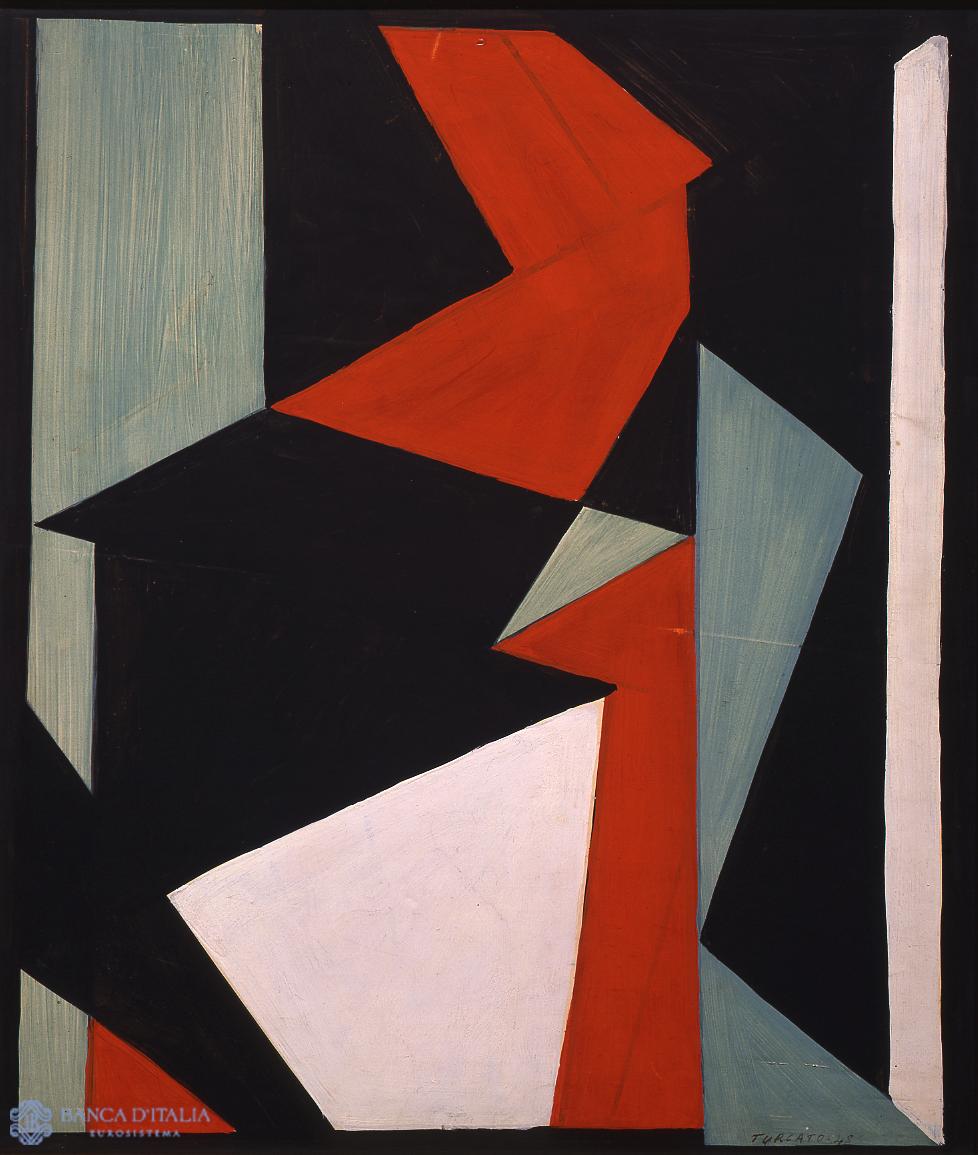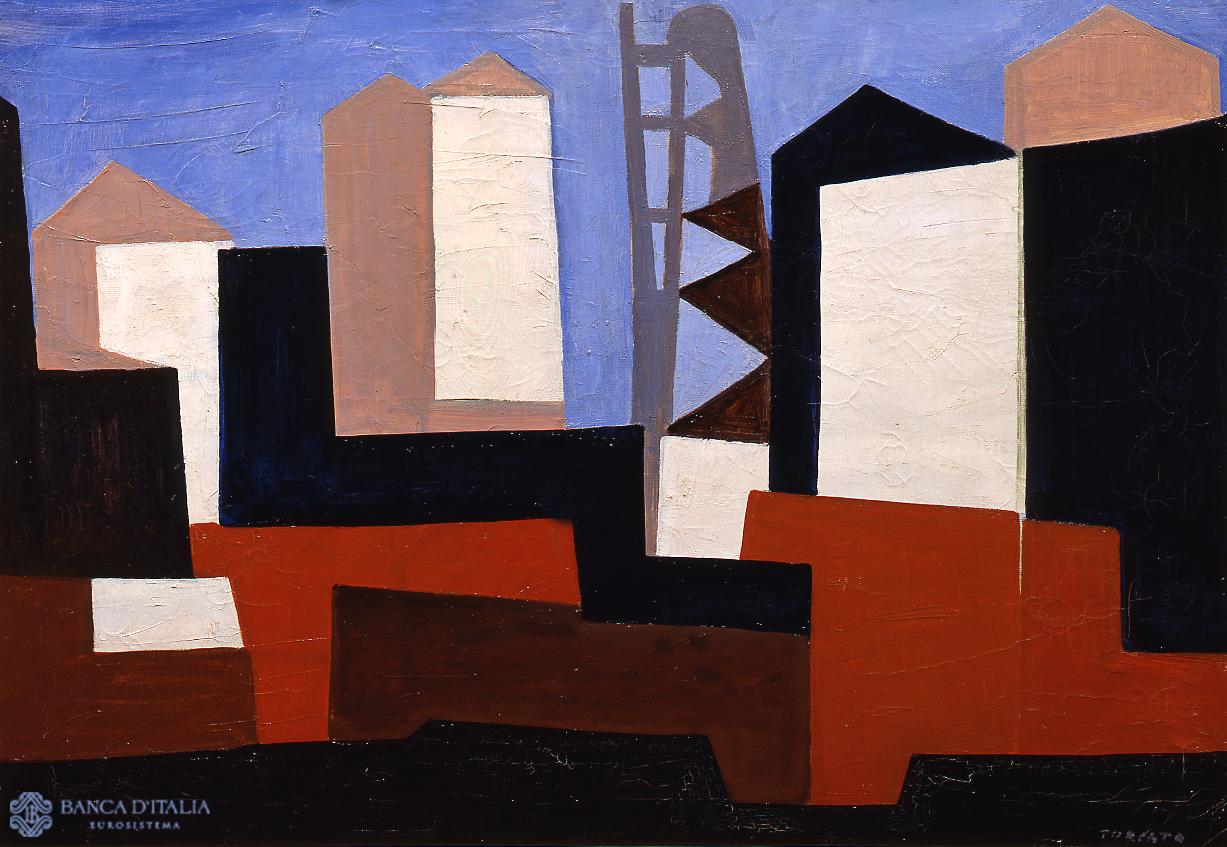Giulio Turcato was born in Mantua in 1912. His youth was a nomadic one of “a hard existence,” roaming from Venice to Milan to Palermo to Rome, where he settled in 1943 and participated actively in the Resistance, joining the Communist Party. Here, with his participation in Oppo’s Fourth Quadriennale (his last), he began a dense series of shows including, in the years that followed, such manifestations as “L’arte contro la barbarie” (Art against Barbarism), a collective show at the Galleria del Secolo, where he signed a “neo-Cubist manifesto” together with Corpora and Guttuso (1946), the first show of Fronte Nuovo delle Arti in Milan (1947), that movement’s participation at the Venice Biennale in 1948, and all the main events involving Forma, the group of young artists (including Dorazio, Perilli, Accardi, Sanfilippo and Consagra), of which he was a member since its foundation in March 1947.
In 1949, at a new show at the Secolo, Turcato made clear his reluctance either to espouse the dogmatic thesis of politically and socially engaged art and hence to join the nascent “socialist realism” movement or to fully accept the dictates of formalist abstraction, in which he immediately saw the risk of slipping into academicism. This won him a long-lasting ostracism and suspicion that dogged his painting, increasingly founded on the free expansion of tone-colour, even in subsequent decades, after Turcato’s art had been acknowledged as one of the great achievements in the Italian art of the later twentieth century, also gaining broad international recognition in his mature and later years.
Giulio Turcato died in Rome in 1995.
Giulio Turcato
Giulio Turcato (Mantua 1912 - Rome 1995)
20th century AD

Compiler
Fabrizio D'Amico





